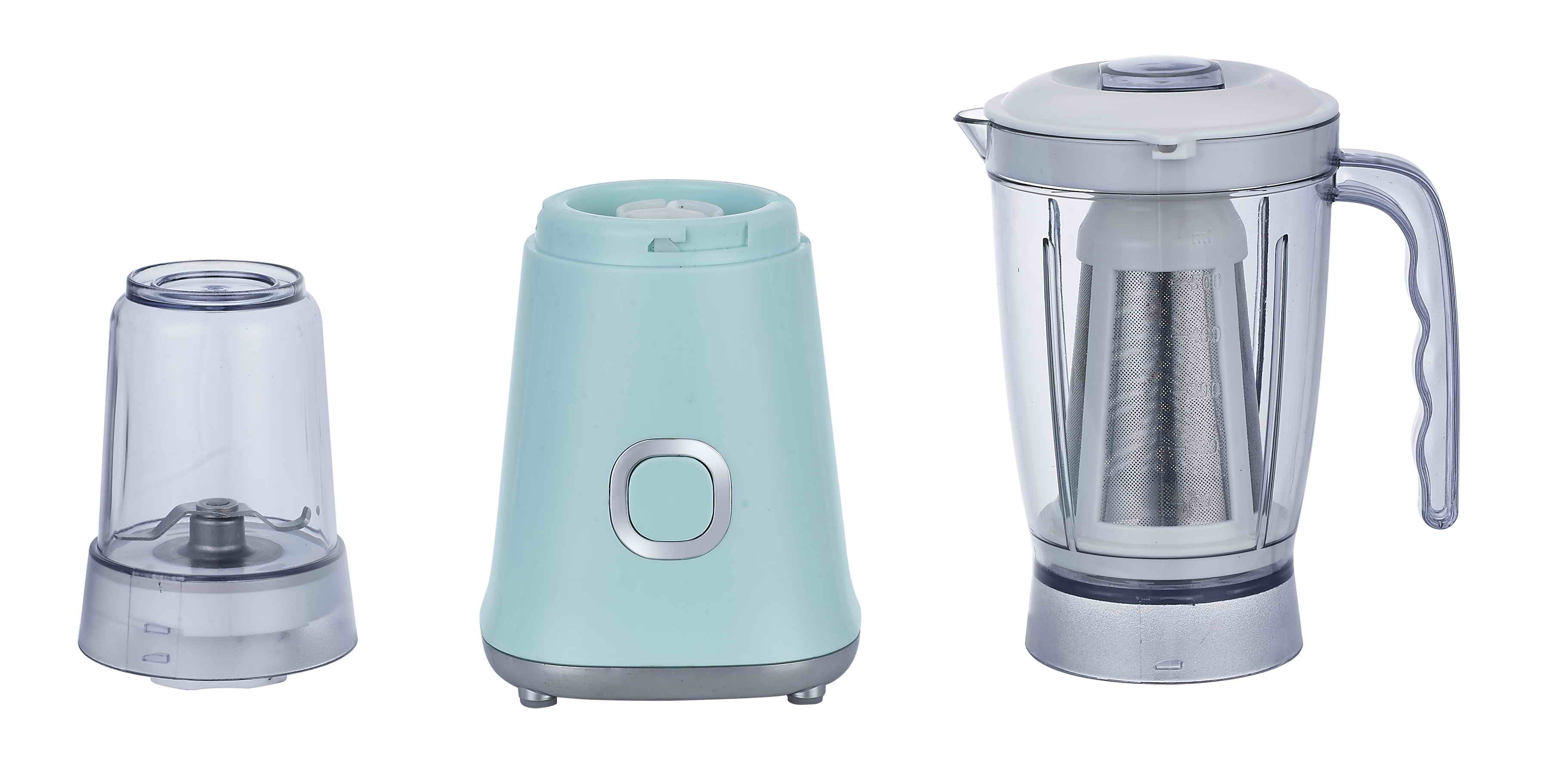- All
- Product Name
- Product Keyword
- Product Model
- Product Summary
- Product Description
- Multi Field Search
 English
English English
EnglishViews: 0 Author: Site Editor Publish Time: 2025-01-17 Origin: Site








Blenders are the unsung heroes of modern kitchens. From whipping up your favorite smoothie to creating homemade soups and sauces, a reliable blender can save you time and effort. But not all blenders are created equal, and choosing the right one for your needs can feel overwhelming with so many options on the market.
This blog will guide you through the world of electric blenders, including immersion blenders, hand blenders, and larger electric kitchen blenders. By the end, you’ll know the pros, cons, and best uses of each type, helping you make the best choice for your cooking style.
An electric blender is a versatile kitchen appliance used to mix, puree, or emulsify ingredients. At its core, it works by spinning blades at high speeds to break down food into smaller particles or liquid forms. Whether you’re blending frozen fruits into a smoothie, pureeing vegetables into soup, or even crushing ice, electric blenders are a staple in many households.
But as useful as they are, not all blenders are designed for the same purposes. Here’s a breakdown of the most common types.
Also known as a stick or handheld blender, the immersion blender is perfect for cooks who value portability and convenience. This compact tool is held directly in your hand and submerged into a container, such as a pot or bowl. Here’s what makes an immersion blender special:
1. Space-Saving Design
Immersion blenders are small and easy to store, making them ideal for kitchens with limited counter or storage space.
1. Convenience for Small Batches
They’re perfect for blending soups directly in the pot or whipping up small quantities of dressings, sauces, or baby food.
1. Lightweight and Portable
With no bulky base, you can move around easily while using it.
1. Easy Clean-Up
Many immersion blenders have detachable parts, which makes cleaning them quick and hassle-free.
· Limited Power
Immersion blenders are not strong enough for tasks like crushing ice or blending tougher ingredients.
· Less Versatile for Large Quantities
It’s better suited for small to medium-sized tasks than large food prep projects.
Soups, sauces, whipped cream, and quick blending jobs.

The term “hand blender” is often used interchangeably with immersion blender, but it can also refer to small compact devices designed for lightweight blending and mixing tasks. Typically, hand blenders combine more basic functionality and affordability.
If you are someone who enjoys making light smoothies, frothing milk for coffee, or blending soft ingredients, a hand blender might be the perfect fit. Keep in mind, however, that it’s not designed for heavy-duty jobs like grinding nuts or blending frozen fruits.
· Pros: Affordable, portable, and sufficient for light jobs.
· Cons: Limited power, restricted functionality.
Consider this a starter blender for anyone just dabbling in blended foods or drinks.
When most people think of blenders, they envision the classic countertop electric kitchen blender. These multi-functional machines are power-packed and capable of handling various tasks, from pulverizing ice to creating creamy soups.
1. Powerful Motors
These blenders have motors strong enough to crush ice, blend nut butters, and tackle heavy-duty recipes, making them versatile and reliable.
1. Versatility
With multiple speed settings and preset programs, you can easily craft smoothies, milkshakes, soups, dips, sauces, and even frozen cocktails.
1. Large Capacity
Countertop blenders often come with a variety of pitcher sizes, accommodating anything from single servings to family-sized batches.
· Space Requirements
They are bulkier and require more counter or storage space.
· Cleaning Can Be Tedious
Pitchers and removable blades may take longer to clean compared to other blenders.
Smoothies, frozen drinks, nut butters, soups, sauces, and heavy-duty blending tasks.
If you prioritize convenience and portability: Go for an immersion blender. It’s compact, easy to clean, and perfect for soups and small-volume recipes.
If you’re a beginner or use blenders sparingly: Choose a hand blender. It’s an affordable option for light blending tasks like smoothies or mixing soft ingredients.
If you’re serious about cooking and blending: Invest in an electric kitchen blender. With its power and versatility, it’s the go-to option for heavy-duty tasks and large servings.
For most kitchens, having both an immersion blender and a countertop blender provides the best of both worlds—a perfect combination for different needs.
Choosing a blender ultimately comes down to your cooking habits, kitchen space, and budget. When shopping, consider the following tips:
· Check for warranty and customer reviews for reliability.
· Look for additional features like speed settings and durable materials.
· Consider noise levels—some powerful blenders can be quite loud.
Start blending smarter, and you’ll wonder how you went so long without the right tool for the job!